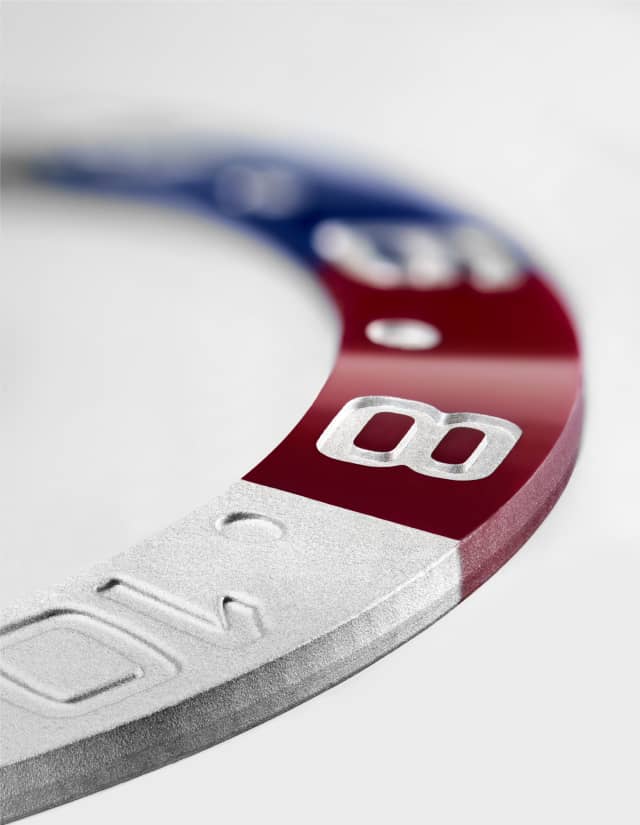Watch's Guide
Complete Introduction to the Rolex GMT-Master

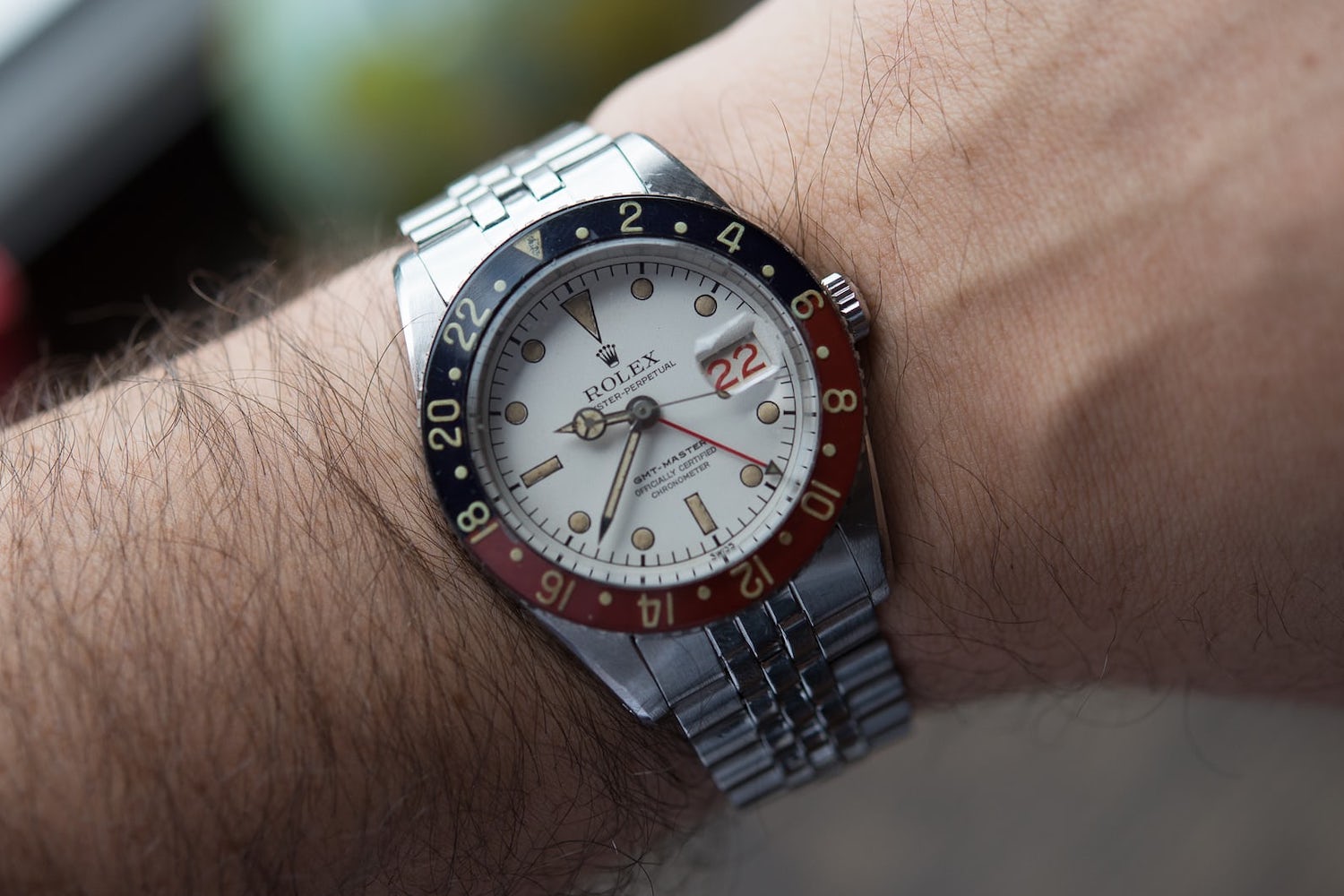
The origins of the Rolex GMT-Master series date back to 1955. The first GMT-Master, reference Ref. 6542, was born during the golden age of intercontinental aviation. It was developed through a collaboration between Rolex and Pan American World Airways (Pan Am) as a tool watch for pilots. At the time, Pan Am requested a wristwatch capable of simultaneously displaying two time zones, to assist with long-haul, cross-time-zone flights. The GMT-Master was thus created and became the official watch issued to Pan Am pilots.
The Ref. 6542 featured a stainless steel case approximately 38mm in diameter, with no crown guards, and was equipped with a revolutionary red-and-blue 24-hour rotating bezel. The original bezel was made of Bakelite, an early form of plastic, with red representing daytime and blue for nighttime—allowing pilots to easily distinguish between day and night hours. Due to its color resemblance to the Pepsi logo, this iconic bezel was affectionately nicknamed the “Pepsi bezel” by collectors.
It is important to note that the early Bakelite bezels contained radioactive luminous material and were prone to cracking, which raised safety concerns in the 1960s and led to their replacement by more durable aluminum inserts. Nevertheless, surviving examples of the original Ref. 6542 with intact red-and-blue Bakelite bezels are extremely rare today and have repeatedly set high auction records.
Historical Background: The Evolution from GMT-Master to GMT-Master II
Early Development and Iconic References (1950s–1970s)


Building on the foundation set by Ref. 6542, Rolex introduced the Ref. 1675 in 1959—an iconic model that remained in production for over two decades. This reference marked several important upgrades, including an increased case diameter to 40mm and the addition of crown guards for improved protection, similar to the Submariner.
The bezel material was also upgraded to a more durable anodized aluminum insert, replacing the fragile Bakelite while retaining the distinctive red-and-blue “Pepsi” bezel design. During this era, Rolex also launched an 18K yellow gold version of the 1675, featuring a brown bezel and matching brown dial—a style that later became known as the early “Root Beer” GMT, which laid the groundwork for future two-tone models.
Notably, the GMT-Master 1675 was not only favored by Pan Am pilots but also gained popularity among NASA astronauts. For instance, astronaut Jack Swigert famously wore a GMT-Master during the Apollo 13 mission, further highlighting the watch’s precision and reliability in demanding professional environments.




By the late 1970s and early 1980s, the GMT-Master series underwent several technical upgrades, such as the addition of a quickset date function and brighter luminous paint for improved legibility. However, the most significant leap in the GMT function came in 1982, when Rolex introduced a new movement that allowed the hour hand to be adjusted independently of the 24-hour GMT hand. This innovation enabled wearers to quickly reset local time without disrupting the home time displayed by the GMT hand.
To mark this milestone, Rolex introduced a new model line: the GMT-Master II. The first reference to feature this breakthrough was the Ref. 16760, launched in 1983, nicknamed the “Fat Lady” due to its slightly thicker case, needed to accommodate the new Caliber 3085 movement. The watch also debuted a brand-new red-and-black aluminum bezel insert, which collectors dubbed the “Coke bezel” due to its resemblance to the Coca-Cola logo. It was a fresh color innovation in the GMT lineup.
It’s worth noting that even after the launch of the GMT-Master II, Rolex continued to produce traditional GMT-Master models—such as Ref. 16750 and Ref. 16700—in parallel until the late 1990s, when the original series was eventually phased out in favor of the more advanced GMT-Master II.
Modern Era and the Introduction of the Ceramic Bezel (2000s to Present)
In the 2000s, the GMT-Master II underwent a dramatic transformation in both materials and performance. The Ref. 16710, produced from 1989 to 2007, marked the final generation of GMT-Master II models with aluminum bezel inserts. It was offered in three bezel color variants: Pepsi (red/blue), Coke (red/black), and all-black. This model housed the Caliber 3185 movement (with later versions using the updated Caliber 3186 in small quantities).
The Ref. 16710 is now highly sought after on the pre-owned market, especially late-production pieces featuring the Cal. 3186 and the rare so-called “Stick Dial”—a misprinted variant in which the Roman numeral “II” in “GMT-Master II” appears thinner and more minimalistic. As the last of the aluminum-bezel GMTs, the 16710 represents a transitional icon between vintage charm and modern robustness.

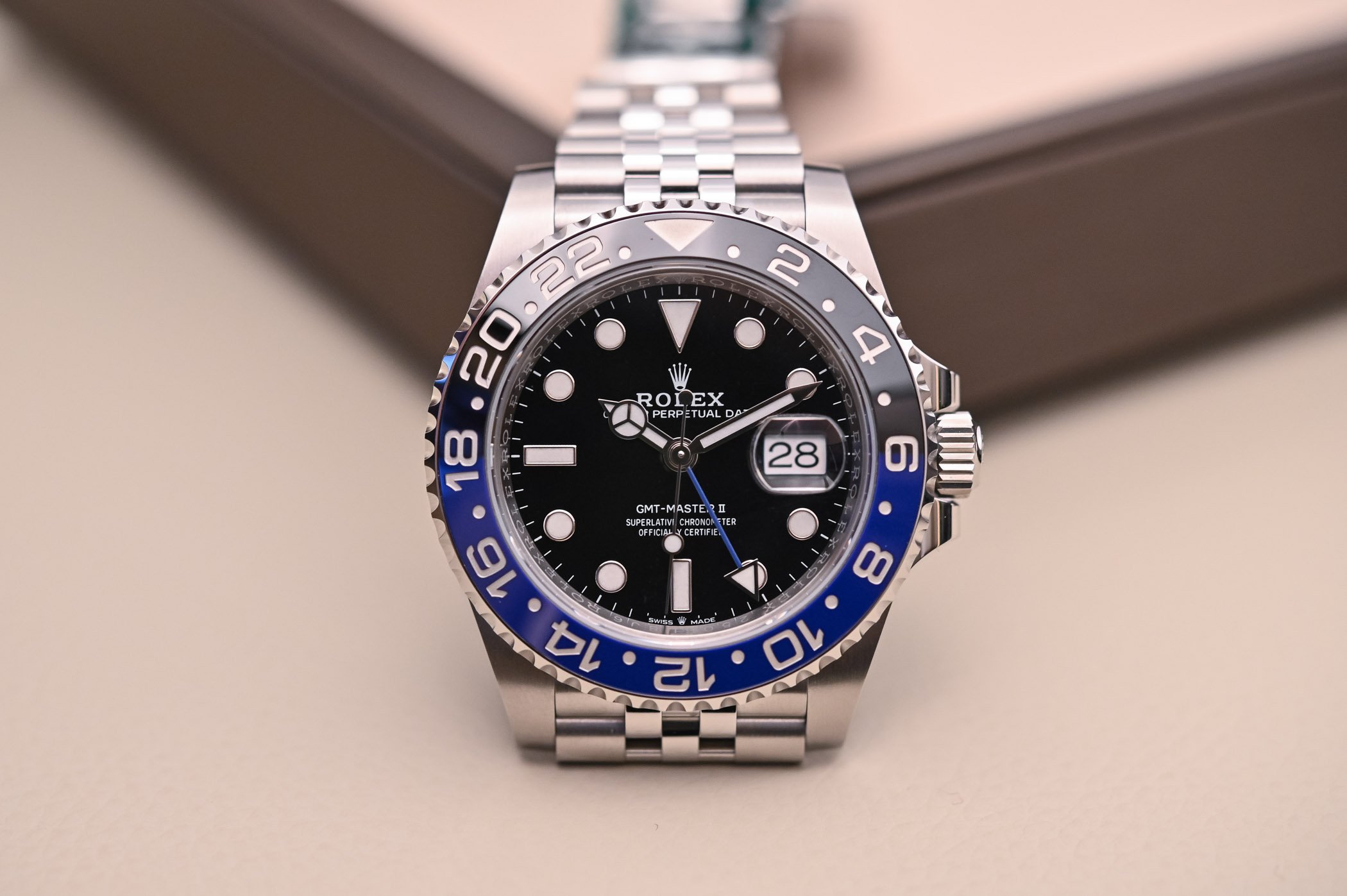

In 2005, Rolex debuted its Cerachrom ceramic bezel technology with an 18K yellow gold GMT-Master II model, marking a pivotal shift in material innovation. This was followed by the launch of the stainless steel Ref. 116710LN in 2007, officially bringing ceramic bezels into the GMT-Master II lineup. This model featured a monochrome black ceramic bezel, enlarged Maxi dial lume markers, and the Caliber 3186 movement. The ceramic insert was highly scratch-resistant and impervious to fading—ushering the GMT-Master series into a new era of durability and modern design.
A major milestone came in 2013, when Rolex introduced its first bi-color ceramic bezel in the form of the stainless steel Ref. 116710BLNR, known as the “Batman” for its striking blue and black color scheme. This release stunned the watch world, as it proved that Rolex had successfully mastered the previously elusive technique of dual-tone ceramic production. The Batman became an instant hit and remained in high demand until its discontinuation in 2019.
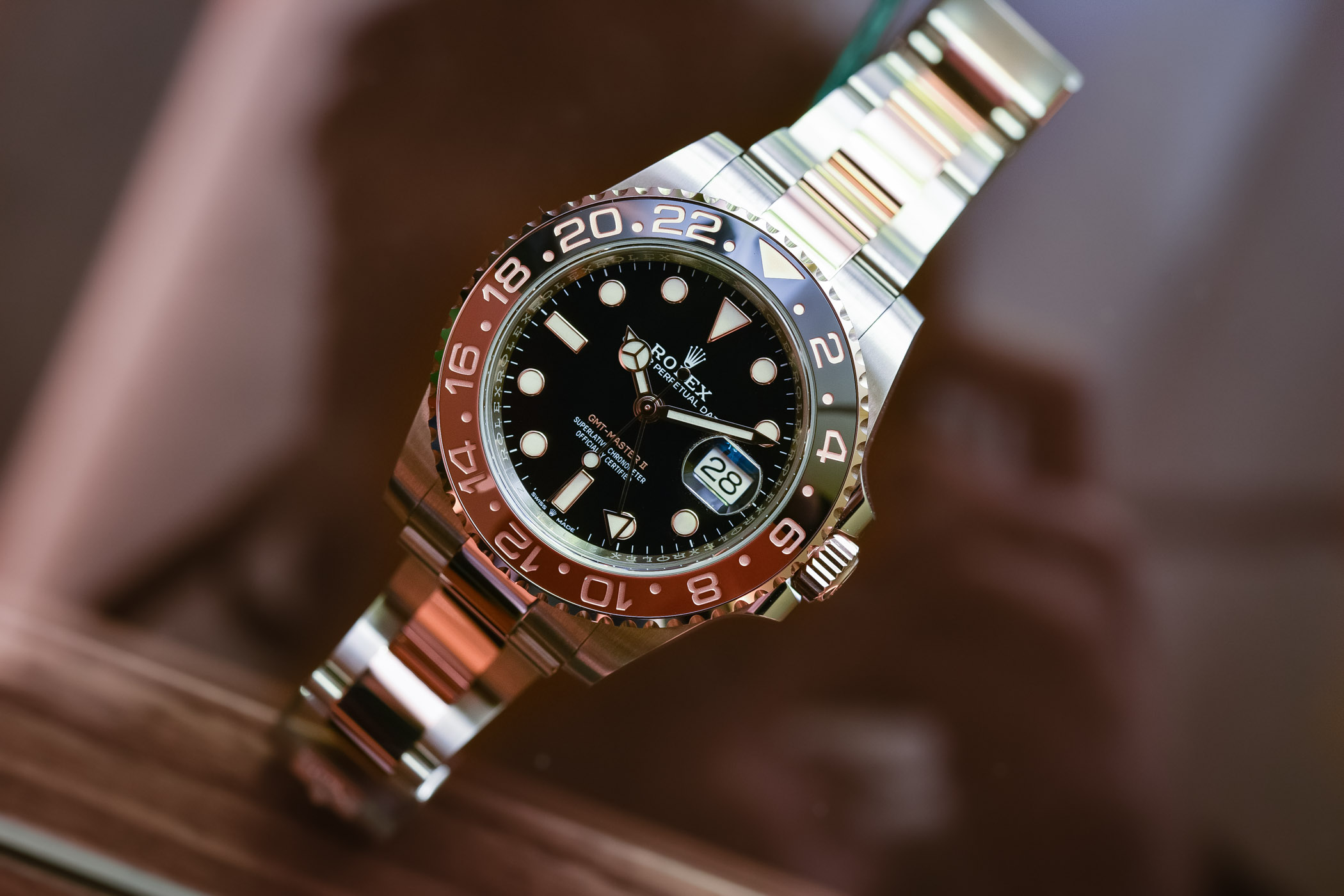
In 2018, Rolex brought back the Pepsi bezel in stainless steel for the first time in decades with the release of the Ref. 126710BLRO. This model featured the iconic red and blue Cerachrom bezel, a newly designed Jubilee bracelet, and an updated Caliber 3285 movement from Rolex’s next-generation 32xx series. It marked the first time that a modern, mass-produced steel GMT-Master II featured the beloved Pepsi colorway—unsurprisingly, it was met with overwhelming enthusiasm from collectors worldwide.
That same year, Rolex also introduced the Ref. 126711CHNR, a two-tone Everose gold and steel model known as the “Root Beer”. Featuring a black and brown ceramic bezel and a half-gold Oyster bracelet, it paid homage to the brown-toned Root Beer GMTs of the 1970s.
In the years that followed, Rolex expanded the lineup with subtle upgrades. From 2021, both the Pepsi and Batman variants became available with Oyster bracelets in addition to Jubilee options. In 2022, Rolex surprised the market again with the introduction of the left-handed GMT-Master II Ref. 126720VTNR, featuring a green and black ceramic bezel—quickly nicknamed the “Sprite”.
Today, the GMT-Master II series continues to evolve with modern engineering and creative color combinations. Yet, its core identity remains defined by the dual-time functionality and the unmistakable rotating 24-hour bezel, making it one of the most iconic and respected travel watches ever made.
Design & Technical Features
Dual Time Zone Function and 24-Hour Rotating Bezel
At the heart of the GMT-Master’s design lies its ability to display two time zones simultaneously. In addition to the standard hour, minute, and second hands, the watch includes a fourth hand—an arrow-tipped 24-hour hand—that circles the dial once every 24 hours. This hand corresponds to the 24-hour scale on the bezel.
The wearer can set the 24-hour hand to represent their home time or departure time zone, while the traditional hour hand displays local time. With the bezel’s triangle marker aligned at the 12 o’clock position, the 24-hour hand indicates the second time zone. To track a third time zone, one simply rotates the bezel forward or backward by the appropriate number of hours, allowing the 24-hour hand to reference a new time zone instantly.
This ingenious design was revolutionary in the 1950s and remains remarkably effective for pilots, frequent travelers, and global professionals.
The GMT-Master II enhanced this functionality with an independent jumping hour hand, which can be quickly adjusted in one-hour increments via the winding crown—without stopping the watch or affecting the minute, second, or GMT hands. This feature makes it extremely convenient to change time zones on the go while maintaining precise timekeeping.
In contrast, the original GMT-Master (I) had the hour and 24-hour hands linked, requiring the wearer to rotate the bezel in order to display a second time zone—less efficient by modern standards. The advent of the GMT-Master II significantly improved usability, cementing its place as the benchmark of dual-time zone watches.
Iconic Bezel Color Variants: Pepsi, Batman, Root Beer, and More
The rotating bezel is not only the functional backbone of the GMT-Master but also a defining aesthetic that gives the series its unmistakable identity. Over the decades, Rolex has introduced a range of legendary bezel colorways, with none more iconic than the red and blue “Pepsi” bezel. First appearing on the original Ref. 6542, the Pepsi bezel has come to symbolize the GMT-Master itself. The vivid red-and-blue combination not only offers strong visual appeal but also serves a practical purpose: red denotes daytime hours, while blue represents nighttime—making it easy for travelers and pilots to distinguish between day and night at a glance.
Other popular and collectible bezel variations include:
- Brown and black “Root Beer” bezel – Originally seen in the 1970s on gold and two-tone models, reintroduced in 2018 with the Everose gold Ref. 126711CHNR.
- Red and black “Coke” bezel – Popularized in the 1980s with the GMT-Master II series.
- Blue and black “Batman” bezel – First introduced in 2013 with Ref. 116710BLNR, breaking new ground in dual-tone ceramic technology.
In more recent years, Rolex has continued to diversify the lineup with color variants like green/black (“Sprite”) and even black/gray options, further enriching the collection. Among them, the Pepsi bezel remains the most recognizable and in-demand, standing as the ultimate symbol of the GMT-Master’s heritage and popularity.
Case, Bracelet, and Movement Evolution

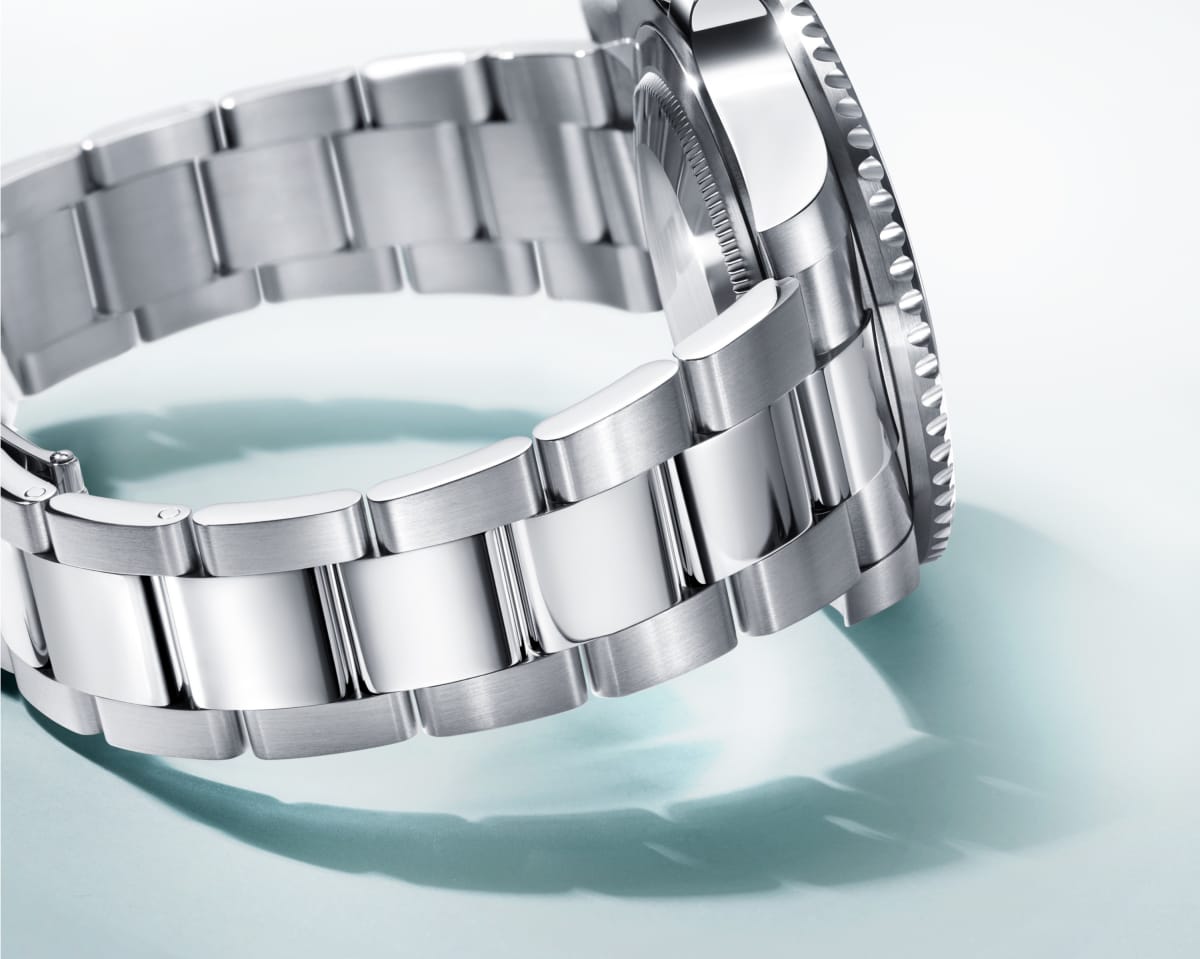
The Rolex GMT-Master series has consistently featured the brand’s iconic Oyster case, offering a blend of robustness and elegance. The current stainless steel models come in a 40mm case with 100 meters of water resistance. Since Ref. 1675, the case has included crown guards to protect the winding crown against impacts. Early models from the mid-20th century used acrylic crystals, which were later upgraded to scratch-resistant sapphire crystals in the late 1980s.
Starting with the Ref. 116710 in the 2000s, Rolex introduced the “Super Case” (also known as the “Maxi Case”), featuring broader lugs and a thicker bezel for a more muscular and modern appearance.
Rolex offers the GMT-Master with two iconic bracelet styles:
- Oyster bracelet: A three-link, solid-end bracelet known for its sporty and durable design. It comes with an Oysterlock folding safety clasp, making it perfect for daily wear.
- Jubilee bracelet: A five-piece link bracelet, originally introduced in the 1940s. It provides exceptional comfort, a dressier aesthetic, and a more vintage vibe.
Historically, many Pan Am and early dual-time GMT models were fitted with Jubilee bracelets, though both styles were often interchangeable. In 2018, Rolex revived the Jubilee for its sports models by pairing it with the 126710BLRO (Pepsi)—a move that delighted collectors and marked the bracelet’s official comeback on stainless steel GMTs. Since then, both the Pepsi and Batman models have been available with either bracelet type.
Generally speaking, the Jubilee is praised for its superior comfort and scratch resistance due to its fine links, while the Oyster offers a clean, sporty, and more aggressive look.
Material Options
The GMT-Master series is available in:
- Oystersteel (stainless steel) – The most popular and accessible option.
- Rolesor (two-tone) – Combining steel with yellow or Everose gold.
- Full precious metals – Including yellow gold, white gold, and Everose gold.
Steel models are prized for their practicality and value retention, making them the top choice for most buyers. Two-tone and solid gold versions, such as the Everose “Root Beer”, appeal to collectors seeking luxury and exclusivity.
Movements: Precision in Motion
From the start, the GMT-Master series has been powered by in-house Rolex automatic movements, evolving steadily in terms of precision, durability, and innovation.
Movement Timeline:
- Ref. 6542 & 1675 – Used the Caliber 1036/1065, modified with a 24-hour gear train (approx. 42-hour power reserve).
- Late 1960s – Introduction of Caliber 1575, offering improved stability.
- 1980s (GMT-Master II Ref. 16760) – Debut of Caliber 3085, allowing independent jumping hour hand adjustment.
- 1990s–2000s – Ref. 16710 & 116710 transitioned to Caliber 3185, then Caliber 3186. The 3186 introduced a Parachrom blue hairspring and gear refinements for enhanced accuracy and anti-magnetism.
- 2018–Present – All modern GMT-Master II models now house the Caliber 3285, part of Rolex’s new-generation 32xx series.
The Cal. 3285 features:
- Chronergy escapement for improved energy efficiency
- 70+ hours of power reserve
- Paraflex shock absorbers
- COSC certification and Rolex’s own Superlative Chronometer testing (−2/+2 seconds per day)
This movement makes modern GMTs not only robust but remarkably precise—living up to their reputation as the ultimate traveler’s tool watch.
Investment & Value Retention Analysis

According to the Rolex GMT-Master II Market Index by WatchCharts, the GMT-Master II has proven to be a consistently strong performer in both collector and investment circles. With its dual time zone functionality, iconic bezel designs, and Rolex prestige, the model has enjoyed high demand across global markets.
Since the overall watch market correction in 2022, GMT prices have stabilized. However, popular steel models—especially the Pepsi (126710BLRO) and Batman (126710BLNR)—continue to trade at a premium above retail, signaling strong underlying value. Unlike the highly speculative Daytona market, GMT prices exhibit more moderate volatility, making them a balanced choice for both enjoyment and long-term appreciation.
Secondary Market Trends & Auction Records
As one of Rolex’s most iconic sports watch lines with deep historical roots, the GMT-Master series has maintained impressive strength in the secondary market. Each generation and reference has shown unique pricing patterns:
Vintage GMTs (Ref. 6542, 1675, etc.)
Vintage models are increasingly scarce due to limited production and age. Well-preserved examples have achieved exceptional auction results. Notably, a bezel-less Ref. 1675 once owned and worn by Marlon Brando in Apocalypse Now sold for approximately $1.95 million USD in 2019. Just four years later, the same piece returned to auction and hammered at over CHF 4.58 million (approx. $5.12 million USD), setting a record for the GMT-Master series.
While celebrity-linked results are rare, they highlight the rising collector value of vintage GMTs. Standard Ref. 1675 models have seen values rise significantly over the past decade—from just a few thousand USD to tens of thousands, depending on condition and originality. Fully complete examples with box and papers command even higher prices. Overall, vintage GMTs are appreciated for their historical significance and consistent long-term appreciation.
Aluminum Bezel Models (1990s–2000s, e.g., Ref. 16710)
Ref. 16710, the final generation with aluminum bezels, has seen strong price appreciation in recent years. Around a decade ago, a well-preserved 16710 could be had for $7,000–9,000 USD, but values have surged as Rolex discontinued aluminum inserts and transitioned to ceramic bezels.
Today, 16710 models range from $10,000 to $18,000+ USD, depending on dial variant, bracelet, and presence of the Caliber 3186 movement. The Ref. 16700 (the last true GMT-Master I) is also gaining traction due to its low production numbers. These references are praised for their classic aesthetics, wearability, and value-driven collectibility.
Modern Ceramic Models (Ref. 116710 & 126710 Series)
The Ref. 116710LN (black bezel) surged in value after its 2019 discontinuation, as it marked the end of the all-black GMT in steel. Its minimalist, timeless appeal has earned it “future classic” status among forward-looking collectors.
Similarly, the 116710BLNR “Batman” saw sharp price spikes following its brief discontinuation, before being reintroduced as the 126710BLNR. While prices corrected slightly after the newer model debuted, the original Batman remains valued above retail.
As for current-generation references like the 126710BLRO (Pepsi), 126710BLNR (new Batman), and 126711CHNR (Root Beer), all remain consistently above retail due to Rolex’s tight supply and high demand. At peak hype, some of these models traded at double retail prices on the gray market. Even with market corrections and stabilized production, premiums of 30–50% above MSRP remain common today.
In particular, the Root Beer—thanks to its unique color combo—has proven resilient. Despite its higher retail price, it holds steady in resale, often trading at or slightly above MSRP, outperforming most traditional two-tone models.
In short, any popular bezel variant from the modern GMT-Master II lineup tends to retain its value well and shows long-term upside potential.
Value Retention Breakdown: Pepsi, Batman, and Root Beer
Pepsi (Red/Blue Bezel)
The quintessential GMT-Master design, the Pepsi bezel, remains universally coveted. The modern 126710BLRO has had multi-year waiting lists since its 2018 debut, and secondhand prices have remained well above retail. Its historic significance and instant recognizability make it one of the most resilient and sought-after Rolex models on the market.
Batman (Blue/Black Bezel)
As the first dual-color ceramic GMT bezel, the Batman bridges classic styling with modern Rolex innovation. The Ref. 116710BLNR’s temporary discontinuation spiked demand, and the subsequent 126710BLNR revival only added to the hype. Strong ongoing demand and Rolex’s limited supply continue to support a robust resale value.
Root Beer (Black/Brown Bezel)
Originally a niche vintage design, the Root Beer became a breakout hit in 2018 with the Everose Rolesor Ref. 126711CHNR. The black/brown ceramic bezel, paired with Everose gold and chocolate lume accents, created a luxurious yet distinctive look. While two-tone models often lag in investment appeal, this reference defied expectations. Its early scarcity pushed prices above retail, and even as supply increases, it continues to hold strong value in the pre-owned market.一。
Comparison with Submariner and Daytona as Investment Icons
The Rolex “Holy Trinity” of steel sports watches—GMT-Master, Submariner, and Daytona—each holds a unique place in the watch investment landscape.
GMT-Master: Falling between the Sub and Daytona, the GMT-Master series offers both practicality and collectibility. Its dual-time function, bold bezels, and historical depth make it appealing to both travelers and investors. Unlike Daytona’s speculative peaks, GMT-Master prices tend to grow more organically and steadily.
Submariner: With a long production history and broad appeal, the Sub is seen as a “stable growth” investment. While popular models like the black Submariner offer consistent demand, limited editions like the “Hulk” (green dial/bezel) have shown strong post-discontinuation surges. Its high liquidity and large collector base make it a safe bet.
Daytona: The most volatile and hyped Rolex. Steel Daytonas, especially the white “Panda” Ref. 116500LN, are often unavailable at retail and fetch 2–3x MSRP in the gray market. Driven by scarcity and celebrity heritage (e.g., Paul Newman), the Daytona has become a high-risk, high-reward asset, prone to sharp spikes and corrections.



